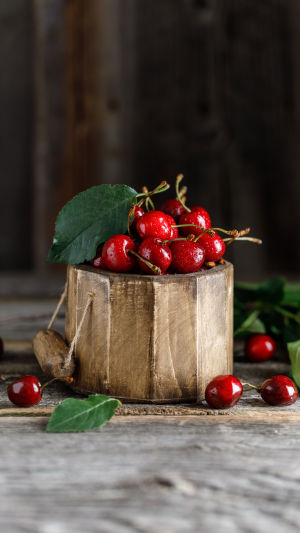When summer arrives, one of the first fruits that come to mind is the juicy, sweet cherry. We can’t help but get excited about the arrival of fresh cherries at our local markets. There’s something about biting into a perfectly ripe cherry that’s both refreshing and indulgent.
This fruit, with its vibrant color and delightful flavor, has a special place in our hearts and on our tables. Today, let’s dive into the world of sweet cherries, exploring their varieties, how to choose the best ones, and where they come from.
<h3> Exploring Cherry Varieties </h3>
Cherries are not one-size-fits-all; there are several varieties, each with its unique flavor and texture. Here are some of our favorites:
<b> Bing Cherries:</b> These are perhaps the most popular type of sweet cherry. With their deep red color and rich, sweet flavor, Bing cherries are perfect for snacking or adding to desserts. We love their firm texture, which holds up well whether you’re eating them fresh or using them in a recipe.
<b> Rainier Cherries:</b> Named after Mount Rainier, these cherries are known for their striking golden-yellow skin with a hint of red. Rainier cherries are exceptionally sweet and juicy, making them a luxurious treat. Their delicate skin is thin but their flavor is robust, often leaving us craving more.
<b> Lapins Cherries:</b> Lapins cherries are a dark red variety, similar to Bing but typically larger and a bit firmer. They’re less tart, which makes them a fantastic choice for eating fresh or incorporating into salads and salsas.
<b> Sweetheart Cherries:</b> As the name suggests, Sweetheart cherries are known for their sweet, slightly tangy flavor and heart-shaped appearance. Their bright red color and firm texture make them perfect for making cherry preserves or simply enjoying on their own.
<h3> Choosing the Perfect Cherry </h3>
When it comes to selecting cherries, we’ve learned a few tricks over the years to ensure we get the best ones:
• <b> Look for Firmness: </b> We always look for cherries that are firm to the touch. A soft cherry may be overripe or starting to spoil.
• <b> Check the Color:</b> Vibrant, deep red cherries usually indicate ripeness. For Rainier cherries, look for a golden-yellow hue with a hint of red.
• <b> Inspect the Stem:</b> Fresh cherries have green stems. A dried or brown stem can be a sign that the fruit is past its prime.
• <b> Avoid Wrinkles:</b> Wrinkling can indicate that the cherries are starting to dry out. We prefer cherries that are plump and smooth.
<h3> Pricing and Origin </h3>
The price of cherries can vary depending on the season and region. We find that cherries are typically more affordable during their peak season, which is from late June to early August. Prices can range from $3 to $6 per pound, but during off-seasons, they may be higher due to import costs.
As for where cherries come from, they are grown in many parts of the world. In the United States, Washington, Oregon, and California are known for their high-quality cherry production. We’ve also discovered delightful cherries from countries like Türkiye and Spain, which are often available in international markets.
Top 5 Most Popular Cherry Trees | NatureHills com
Video by Nature Hills Nursery
Fresh sweet cherries bring a special kind of joy to our summer days. Whether we’re enjoying them straight from the fruit bowl, using them in a pie, or just savoring their sweetness as a snack, cherries never fail to impress. As the season rolls in, we make sure to fill our baskets with these delightful fruits, appreciating their flavor and the brief but blissful cherry season.
So, Lykkers, let’s embrace the sweetness of fresh cherries while we can, and remember that each bite is a reminder of the simple pleasures that summer has to offer.





